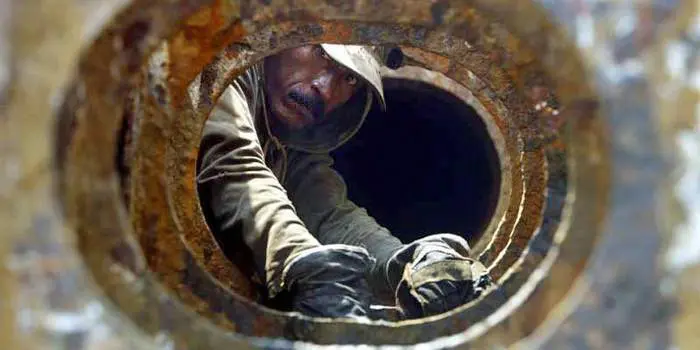Global – Exports of excess steel production from China will continue to ‘keep a lid on steel and ferrous scrap prices’, according to William Schmiedel, president of the BIR ferrous division. And although many governments have been erecting – or threatening to erect – barriers to stem the entry of Chinese steel into their markets, ‘the real solution will have to come from China itself’, he maintains.
Chinese officials should ‘start talking about cuts in steel production rather than in capacity’, he goes on to assert. The Chinese produced over 800 million tons of steel last year ‘but that is nowhere near their 1.1 billion to 1.2 billion tons of capacity’, he points out. ‘Capacity cutbacks that have no effect on production will not move the needle.’
Also in Asia, scrap buyers in South Korea ‘briefly came to life’ in June and ordered several bulk scrap cargoes following a long period of relative inactivity. ‘Scrap has continued to flow into Korea from Japan although in ever-smaller quantities and at weaker prices,’ it is observed.
In the USA, meanwhile, busheling prices remained strong into July ‘as a slower rate of industrial production cut into availability’. Conversely, other grades such as shredded scrap have become more plentiful as yards and dealers have ‘dumped scrap into the market based on higher prices seen in prior months’.
A reduced US export market has contributed to weigh down scrap prices, with the strength of the dollar attracting cheaper European scrap into the USA and further eroding domestic levels. ‘That trend should continue into August unless export shows any new signs of life,’ it is contended.
From a low point of Yen 17 500 per tonne (US$ 168.27) in early July, the export price for H-2 scrap leaving Japan has recovered to Yen 19 000-19 500 on a fob basis (US$ 182.69-187.50), with mills in Vietnam deemed likely to be more aggressive purchasers from the end of this month as their government has finally issued import licences for 2016.
Scrap demand within Japan has been dampened by production cuts at a number of mills, especially those operating electric arc furnaces. Domestic scrap prices in both Russia and Ukraine are around US$ 165 per tonne delivered to the mill.
The stable-to-stronger Russian ruble is creating additional problems for the country’s exporters while Ukraine has finally implemented its Euro 30 per tonne scrap export tax. Some market firming in Europe has been evident as July has progressed. Demand remains healthy and scrap is by no means abundant, thus suggesting a stronger market domestically for the traditionally quieter month of August.
However, there is also economic uncertainty in the aftermath of the UK’s vote to leave the EU. Overall, ‘sentiment is positive’ with the recent improvement in price levels.
The latest ‘World steel recycling in figures’ update from the BIR ferrous division’s statistics advisor Rolf Willeke highlights a year-on-year drop in steel scrap usage for crude steel production in all key countries and regions during this year’s first quarter, including the EU-28 (-8.8% to 22.23 million tonnes), China (-7.1% to 19.5 million tonnes), the USA (-4.1% to 11.7 million tonnes), Japan (-6.2% to 9.39 million tonnes), South Korea (-8.3% to 6.6 million tonnes), Russia (-19.4% to 2.684 million tonnes) and Turkey (-0.9% to 6.093 million tonnes).
Compared with January-March 2015, Turkey’s ferrous scrap purchases from overseas edged 0.2% higher to 4.152 million tonnes while India upped its imports by 35% year on year to 1.955 million tonnes. Ferrous scrap imports into India for the 12-month period to March 31 this year amounted to approximately 6.2 million tonnes, equivalent to a year-on-year increase of more than 20%.
After ‘a gap of many years’, the largest exporter of ferrous scrap to India in the 2015/16 fiscal year was the USA which accounted for around 17% of the total volume. Currently, however, India’s demand for finished steel remains ‘very poor’ and banks are still wary of lending to steel mills owing to their ‘overexposure’ in this sector.
Meanwhile, Bangladesh has emerged as ‘a regular importer of bulk cargoes’, it is noted.
Don't hesitate to contact us to share your input and ideas. Subscribe to the magazine or (free) newsletter.



